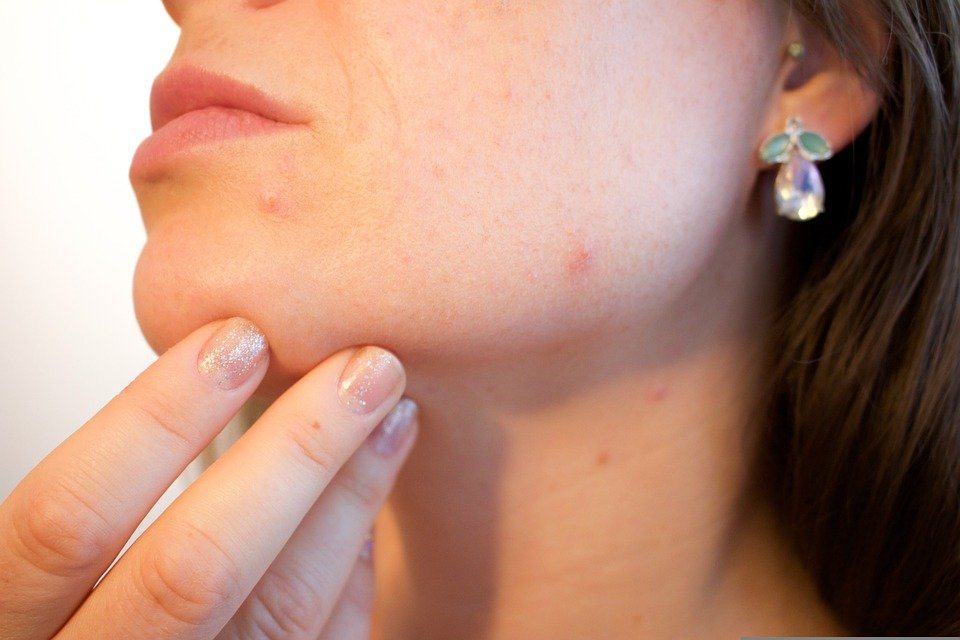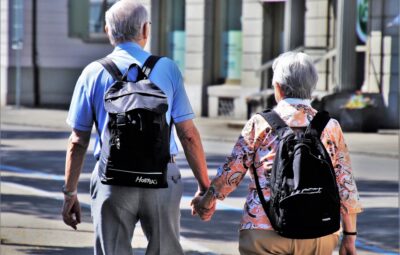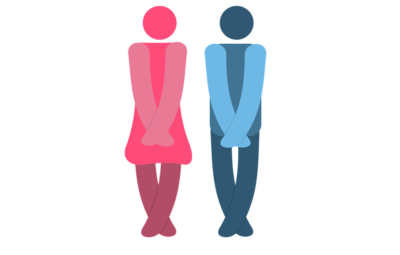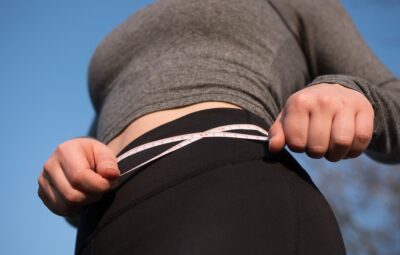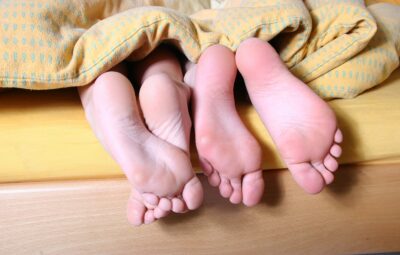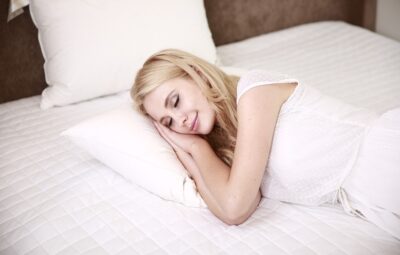THE KEY PLAYERS: HOW 3 DIFFERENT HORMONES AFFECT SKIN
We’re going to look at how hormones change throughout a woman’s life and how that affects their skin health. But first, it will be helpful to understand how different sex hormones can impact the skin. Different types of cells in your skin have receptors for different hormones. The presence or absence of these hormones can affect your skin in different ways.
While other hormones can impact the skin, we will focus on the three that have the biggest effect: estrogen, progesterone, and androgens.
ESTROGEN
The skin, blood vessels, hair follicles, oil glands, and pigment-producing cells all require estrogen for normal functioning, according to Keira Barr, MD. Barr is a dual board-certified dermatologist and menopause specialist, as well as the author of The Skin Whisperer. ” It has been linked with an increase in collagen production, as well as increased skin thickness and hyaluronic acid production. Additionally, it has been known to improve skin barrier function, maintaining skin hydration, reduce sebaceous gland activity, and improve wound healing. It also plays a role in modulating inflammation.”
PROGESTERONE
Progesterone has less of an effect on the skin than other hormones, but it is thought to play a role in skin elasticity, pigmentation, and the increased circulation and sebaceous gland activity that is seen during the second half of the menstrual cycle, according to Dr. Barr.
ANDROGENS
Although androgens are typically associated with males, they can also affect female skin. The female body produces small amounts of hormones that play a role in oil gland production, including testosterone. When hormones are out of balance, it can cause facial hair growth that some women may not want. This can happen in women with PCOS or during menopause when female hormone levels drop and the levels of androgens (male hormones) increase.
IN YOUR 20S AND 30S
There can be a lot happening in your 20s and 30s. During adolescence and beyond, many women still experience acne flare-ups. This is often due to the hormonal changes that take place during their monthly cycles. Around half of all women in their twenties and a third of women in their thirties suffer from acne, according to research.
Periodically, acne can vary in moisture content, sensitivity, and general radiance. Here, we break down the typical hormonal changes that occur throughout a menstruating woman’s cycle, how they affect the skin, and what you can do about it:
MENSTRUATION (DAYS 1-5)
Each menstrual cycle starts with menstruation or your period. This occurs at the beginning of the follicular phase. According to Dr. Barr, skin hydration and the skin’s barrier against irritation and inflammation are both at their lowest levels during this phase. When both progesterone and testosterone are low, the oil glands produce less oil, making the skin dry.
The cumulative effects of these bad habits can lead to dehydrated skin that is more prone to irritation and inflammation. “This is why conditions like atopic dermatitis (eczema), contact dermatitis, and psoriasis, may be worse just before or during your period,” said Dr. Barr.
The best way to deal with sensitive skin is to moisturize it with soothing and nourishing ingredients. Choose Mild Cleansers Choose cleansers that contain ingredients like hyaluronic acid, ceramides, gotu kola, and sea buckthorn oil, Dr. Barr suggests. You may be able to reduce irritation by using fewer products with harsh ingredients like exfoliants, retinoids, and chemicals. It is beneficial to drink a lot of water and eat foods that contain omega-3 fats, vitamin C, and antioxidants to reduce inflammation and irritation, have a healthy skin barrier, and stay hydrated.
FOLLICULAR PHASE (DAYS 1-14)
After your period, estrogen levels will gradually increase until they peak around day 14. Most women ovulate around this time. This means that the skin’s barrier function is increased, it becomes more hydrated, production of hyaluronic acid and collagen is increased. At ovulation, when estrogen is at its highest and progesterone is still low, skin is typically smoother, calmer, and more radiant than at other times of the month. This is because sebaceous glands produce less oil when progesterone is low.
Just sitting and relaxing can rejuvenate your skin and improve your state of mind. You don’t need to do much to improve your skin and state of mind, just sit and relax. This is a time to embrace your natural glow and take a break from makeup while protecting your skin from UV rays with a moisturizer that has SPF in it. Optimal skin barrier function during this time of the month usually allows for better tolerance of products with more active ingredients, such as alpha-hydroxy acids (e.g. glycolic acid, lactic acid) and retinoids.
LUTEAL PHASE (DAYS 15-28)
Here’s when things can get a little…greasy. The surge in luteinizing hormone on day 14 causes an increase in progesterone and testosterone. These two hormones lead to increased activity in the sebaceous glands and oilier skin, including an oily scalp, according to Dr. Barr. There may be more inflammation, irritation, and disruption of the skin barrier, which may contribute to breakouts, since estrogen levels are low relative to progesterone.
Approximately 60-70% of women will experience an increase in acne shortly before their period. Zenovia Gabriel, MD, FAAD, who specializes in hormonal dermatology, says that the lower half of the cheeks, the chin, and the jawline region are the most common areas for these hormonal acne breakouts.
As you get closer to your period, estrogen levels will start to drop off, and progesterone levels will decrease as well. This transition can cause your skin to become more dry, dehydrated, and inflamed – which is something we covered earlier.
You might be able to improve your skin by using a toner after cleansing if you have increased oiliness or are more susceptible to acne. Some ingredients which may help with acne include salicylic acid, benzoyl peroxide, tea tree oil, and witch hazel. These may help kill bacteria associated with acne and speed up cell turnover. Unless directed by a doctor, don’t use products that excessively remove oil from your skin as this could trigger your skin to produce even more oil.
Additionally, since acne is an inflammatory condition, consuming anti-inflammatory foods that are rich in omega-3 fats, vitamin C, and antioxidants may help, as well as reducing intake of added sugars and dairy since they have both been linked to hormonal breakouts. There are a number of things you can do to help reduce inflammation, according to Dr. Barr. These include getting enough sleep, exercising, meditating, and spending time with friends and family.
HOW DO I KNOW IF I HAVE HORMONAL BREAKOUTS?
There are three indicators that reveal hormonal acne. If you have breakouts well into your adult years, it could be the first sign of a hormonal issue. The next two texts discuss the location and frequency of acne.
If so, you may be experiencing hormonal acne If you tend to get breakouts around the same time each month, you may be experiencing hormonal acne. Is it before your period comes or during that last week of birth control? If you aren’t sure if something is a symptom of a bigger problem, try tracking it for a few months to see if there is a pattern. There are a lot of apps these days that make it easy to save this info for later review.
Do your breakouts occur mainly on your chin or jawline? The side of the face and neck are also common locations for acne.
If you are dealing with acne and answering yes to these last few questions, it is a good indication that it is hormonal acne.
Treating Hormonal Acne
Hormonal acne can cause small, red spots, whiteheads, blackheads, or deep and painful cysts.
Our primary goal for treating hormonal acne is to restore balance to our skin and our lives. Hormonal acne can be made worse by things like stress, so it’s important to take a holistic approach to clearing up your skin.
Red & Inflamed
A pimple or spot is usually red and somewhat painful when there is a bacterial infection. This type of acne is typically categorized as either papules or pustules by professionals. Lovely names, right?
Papules are small raised bumps on the skin that are red and inflamed. Typically, hormonal blemishes are not the kind of blemishes associated with dermatitis and allergic reactions.
Pustules are what we normally think of as pimples. Red, raised, and filled with puss. This occurs when a hair follicle becomes plugged with oil and dead skin cells, allowing bacteria to grow.
In order to reduce the appearance of pimples, you need to cleanse your skin to remove the dirt, oil, and bacteria that are clogging your pores and causing inflammation.
You should avoid using any kind of scrub that could irritate your skin until the redness and swelling go down. Do not pop pimples that are swollen as it can allow more bacteria to enter, which could result in scarring and further irritation.
If you are having more papule-type blemishes, has there been a change in your skincare routine? New laundry detergent? Or maybe you used harsh skin care products that didn’t work well with your skin.
If you are experiencing red bumps on your skin, you may want to try using simpler, gentler skin care products and see if your symptoms improve. Tea Tree oil can be used to help with blemishes by spot treating the problem areas. This will help to clean and take care of the skin.
Blackheads and Whiteheads
Spots on the face are usually caused by oil and dead skin getting trapped in the pores.
Whiteheads are little bumps with a white head. You can remove them easily with a warm compress. They shouldn’t be painful. However, avoid yanking at the skin or attempting to do this on dirty skin.
Blackheads are impacted pores that have oxidized.
A regular cleansing and exfoliation program is necessary to cleanse and unclog pores for both of these conditions. Antioxidants are important in preventing blackheads because they prevent the oxidation that leads to the black color in blackheads.
Cysts and nodules
Acne that is deep within the skin is the worst kind of acne, as it can take days, if not weeks to heal. Oil glands beneath the surface of the skin can become blocked and inflamed, leading to the formation of a cyst. The boils are often very painful and can feel warm when touched.
Do not attempt to press or pop cysts or nodules. The best way to deal with this is to clean your skin thoroughly and use a topical ice pack to reduce the inflammation. Then just wait for it to go away. If your acne is severe, you may need to see a dermatologist for a cortisone shot or other treatment methods.
SKIN CARE ROUTINES TO IMPROVE THE LOOK OF HORMONAL ACNE
The key to calming a person down is to be soothing and calm yourself. If your skin is balanced, it will feel healthy and look good. Apply these recommendations to help you improve the appearance of your skin.
- Cleansing
Your first line of defense against bad skin is a good facial cleansing routine. It will get rid of extra oil and clean the skin from the bacteria and other dirt that causes swollen breakouts.
An ideal cleanser will not disrupt your skin’s delicate pH balance while also leaving your skin feeling clean and purified. Steer clear from anything that is too harsh. If you want to avoid irritating your skin, you shouldn’t compromise its protective layer.
Make sure to wash your face in the morning and at night. begin with basic steps and then increase as your skin becomes used to it and you feel more comfortable.
- Exfoliation
An increase in oil production and hormonal imbalances can both make it harder to shed dead skin cells. Exfoliation is a key step in maintaining healthy skin by removing dead skin cells, stimulating healthy cell function, and keeping pores clean.
If you are too aggressive with cleansing, it can actually make your skin problems worse. More is not better in this case. Try to exfoliate your skin no more than two times per week, and use products that won’t irritate your skin.
- Mask
Facial masks are an excellent way to improve your skin’s appearance by providing a concentrated dose of beneficial ingredients. The different textures in facial masks can offer both immediate and long-term results.
- Hydrate
The logic follows that aging means needing more moisturizer. The truth is, it depends on your skin’s needs. If you are currently experiencing acne breakouts, it is probable that you need to take a step back until the situation improves.
The point is not to get rid of moisture altogether, but to be mindful of the kind you’re using. The goal is to keep the skin hydrated and in balance, not to add more congestion.
Look for lightweight lotions and gels, rather than creams. Hyaluronic Acid is an effective way to retain moisture in the skin without any sticky, oily residue. It can hold 1,000 times its weight in water!
Stay away from oils that have a tendency to clog pores, like coconut oil. Hemp Seed Oil, Grape Seed Oil, and Jojoba are great options for protecting pores from the look of blackheads, whiteheads, and other blemishes.
Remember, moisturize when you need to. Don’t force it.
- Visit an Esthetician
Hormonal acne can be more difficult to treat than normal pimples. If you want to improve your skin’s appearance, you should consider visiting an esthetician and getting deep pore cleansing facials and spa treatments like LED Light Therapy. These treatments can help reduce redness, diminish the appearance of pores, and speed up the healing of inflamed skin.
Spending a few hours at the spa can help manage stress and tension, which can worsen skin problems if not controlled.

